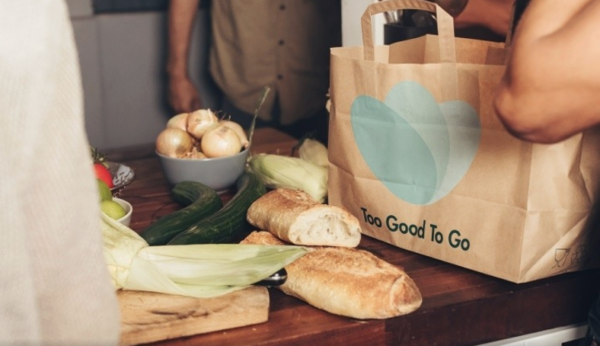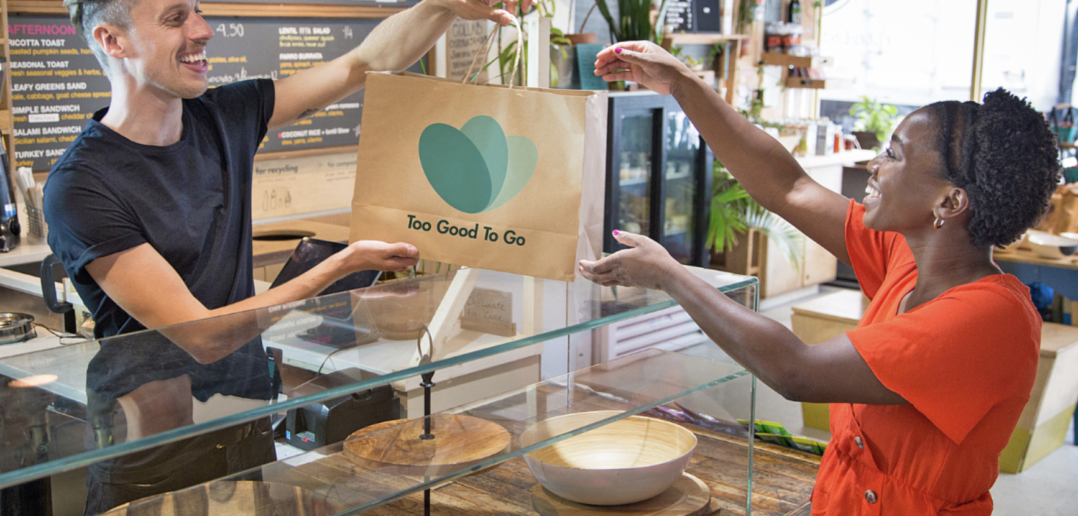Introducing Too Good To Go, the free mobile app that combats food waste by connecting users with restaurants, cafes, bakeries, and other food establishments that have surplus food at the end of the business day.
The aim of the app is to rescue unsold food that would otherwise be thrown away and sell it at a discounted price, supporting businesses through extra income while tackling food waste head-on.
The Food and Agriculture Organisation (FAO) found that each year approximately one-third or 2.5 billion tonnes of all food produced for human consumption is lost or wasted.
Food waste is also responsible for 10 per cent of greenhouse gas emissions, which is more than the entire aviation industry. The FAO estimates that if food waste were a country, it would be the third highest emitter of greenhouse gases after the US and China.
What’s more, industrialised nations generate 222 million tonnes of food waste annually, roughly equivalent to the net food production of sub-Saharan Africa.
The scale of the loss is staggering: in Europe and North America alone, around 100 kg of food per person is thrown away each year, despite still being fit for consumption.
Too Good To Go addresses this global challenge by empowering consumers to make choices that have a positive impact on both their wallets and the planet.
The app offers a win-win solution where businesses can generate extra income, customers can enjoy affordable meals while supporting local businesses, and the environment can benefit from less food waste.
With the rise of the conscious consumer and the emergence of wonky fruit and veg ranges in supermarkets, there is a growing acceptance of imperfect produce.

Founded in Denmark in 2015 and developed as a mobile app in Switzerland the following year, Too Good To Go curbs the environmental hot potato of waste produced by food establishments.
After downloading the app, users are required to enter their postcode before being directed to a page displaying a range of Surprise Bags, each containing a variety of surplus food items from local establishments, all offered at a discount, typically between £3-£6.
Users can find a Surprise Bag near them, reserve it through the app, and pick it up from the store within the given collection time.
By intervening in the food supply chain at the consumer level, Too Good To Go emerges as a powerful catalyst for change that prevents the unnecessary disposal of edible food.
Since its launch, Too Good To Go has expanded into seventeen countries across Europe and North America and partnered with 134,000 businesses, including Starbucks, Aldi, Costa, and Ikea.
Too Good To Go has built a community of over 75 million registered users who have saved 200 million meals from going to waste, equivalent to 500,000 tonnes of CO2e.
As reducing food waste climbs up the global agenda, Too Good To Go is not only a solution but a movement that promotes sustainability and fosters a community-driven approach to combating food waste.
The need for an app like Too Good To Go cannot be overstated: the Boston Consulting Group (BCG) predicts that food waste is set to increase by a third by 2030 unless urgent action is taken.
Sustainable Development Goal 12 (SDG 12) aims to ensure sustainable consumption and production patterns worldwide, addressing the need for more responsible practices in the way goods and services are produced and consumed globally.
One of the key targets under SDG 12 is to halve per capita global food waste at the retail and consumer levels.
Central to achieving SDG 12 is the concept of life cycle thinking, an approach that considers the entire life cycle of a product, from raw material extraction to disposal, in order to assess its environmental, social, and economic impacts.
Life cycle thinking emphasises the efficient use of resources by considering the entire life cycle. This includes optimising material use, minimising waste, and reducing the environmental impact of a product.
Another key point for consideration in the fight against food waste is the lack of understanding of the different terms that appear on food labels, which is believed to be responsible for 10 per cent of the 88 million tonnes of food waste generated annually in Europe.
The terms “use by”, “best before”, “sell by”, and “display until” on food labels convey different meanings regarding the product’s freshness, quality, and safety.

The use-by date indicates the last date recommended for the use of the product while it’s at its optimal quality in terms of freshness, flavor, and nutritional content.
By contrast, the best before date refers to the period during which the product is expected to be at its best in terms of quality, taste, and texture. However, it doesn’t necessarily imply that the product is unsafe to consume after this date.
Many non-perishable items, such as canned goods and dry products, may still be safe to consume after the best before date.
The sell by date indicates the date by which the product should be sold or removed from the shelf. This is not a safety-related indicator but rather a guideline for retailers to maintain quality.
Similarly, the display until date is not directly related to safety but is more about managing inventory and ensuring that older products are sold first.
In 2019, Too Good To Go launched a new initiative in Danish supermarkets urging industry leaders in the food and drinks sector to add “often good after” to food labels to remind consumers that food may still be edible after the specified date.
Several companies including Unilever, Carlsberg, and Arla Foods have adopted the new label to make the distinction between food safety and quality clearer for consumers, encouraging them to make more informed choices and reduce unnecessary waste.
Too Good To Go recommends that consumers use their senses to evaluate the quality of food, stressing how factors such as appearance, smell, and taste can often be more reliable indicators of freshness than the date on the label.
According to the UN, cutting food waste by a quarter would be enough to end famine globally.
Food waste is a systemic problem and requires the cooperation of stakeholders at all stages of the food supply chain, from production to disposal.
By promoting responsible consumption, Too Good To Go highlights the importance of consumer choices in the fight against food waste and reinforces the interconnectedness of consumers, businesses, and the environment in reducing waste footprints.
The vision of a circular economy promoted by Too Good To Go is based on the principle of designing out waste and increasing resource productivity.
Reducing food waste is one of the foremost ways in which global warming can be reversed. To ensure the well-being of future generations, it’s vital that we’re mindful of the long-term effects of our consumer behaviours.
The movement that Too Good To Go has ignited envisions a future where everybody plays a part in reducing food waste and creating a more sustainable and responsible food system for all.
Click here to find out more about Too Good To Go and join the growing community of Waste Warriors today.




